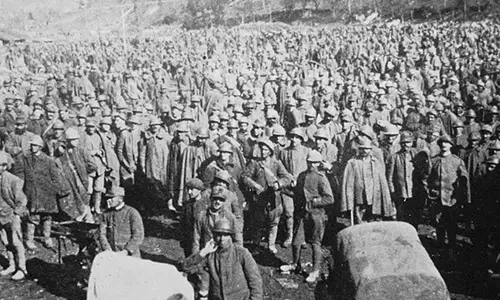The history of World War I is filled with little-known facts which could seem astonishing. The ‘War To End All Wars’ started in the June of 1914, and only completely ended with the signing of the Treaty of Versailles in the June of 1919. Here are some interesting details many of us might be surprised to know:
1. Chemical and trench warfare
The first full-fledged use of chemical warfare happened during WWI, with approximately 30 different poisonous gases used. Even trench warfare was popularised as a means of combat during WWI. Though trench warfare had been used before WWI in small extents during the American Civil War and the Russo-Japanese War, the system of ‘fixed’ trench warfare was standardised only during WWI. This system was replaced in two years with shell-hole warfare which developed later.
2. Tanks
Another interesting aspect about warfare was the development of tank warfare- Major General Sir Ernest Swinton of the British Army coined the term “tank”. The first tank to be constructed for combat was called Little Willie- it was built in 1915, and could move at a speed of 3 miles/hour. Also, it needed a crew of three men to navigate it. It was only much later- by the end of the war- that modern tanks began developing.
3. Youngest soldier
The youngest soldier fighting in the war from Britain was a lad named Sidney Lewis. He was 12 when he enrolled into the army by faking his age. ‘Private Lewis’, his war moniker, fought on the Somme for six weeks before his mother asked for his withdrawal from the services after sharing his age proof with the Imperial army. What more, he returned to service at the end of the war, and also enlisted into the services as a part of the bomb disposal team during WWII.
4. The ‘death’ instinct
Signing Freud, the Austrian who propounded psychoanalysis, wrote one of his least accepted works, ‘Beyond the pleasure principle’, drawing from the experiences of WWI. He theorised that apart from the Id, which is the pleasure principle; another instinct which drives a man is the death instinct- Thanatos.
5. Black soldiers
Despite severe racial discrimination, as many as 380,000 black American soldiers fought the WWI of which, 200,000 were posted outside the U.S. There was also a strong impression that in France, soldiers were not discriminated on the basis of colour. In fact, black soldiers shared bonhomie with their French bosses.
6. The Influenza pandemic
In 1918-19, the world was stricken by the Influenza Pandemic. Not only did it kill half of the American soldiers fighting in Europe at that point, it killed more people than the numbers killed in four years of the war. Further still, there were speculations among the Allies that the flu was a biological warfare weapon of the Germans, exacerbated by trench warfare.
7. Plastic surgery
From public visual record of the war, 41,000 are records of limb amputees; and 60,500 of head and eye injury victims. This reality, coupled with the face injuries caused by shrapnel, reveals the not-so-glorious nature of war. It led to pioneering work in the field of plastic surgery and facial restructuring. An example is of a war pilot named Henry Lumley who was unsuccessfully treated by Harold Gillies.
8. Letters
Letters and postcards were the chief means of communication between a soldier and his family. Around 12 million letters were delivered each week to the front in France for the British soldiers. Of this figure, 375,000 letters were censored each day- there were 5,000 dedicated censors by November 1918. Popular items of exchange were sweets, tobacco, lice powder, etc.
9. Women empowerment
In the U.S., the war led to additional employment of three million women in textile, war, and food industries; with about 20,000 women working for the military in various positions. Some even dressed as men to gain access to combat roles.
10. Manifesto of the Ninety-Three
14 Nobel Laureates from Germany had launched support for the German state, refuting charges of acting against international law and claims that Germany seeded the war; and backing the army’s decision to what they believed was retaliatory action. Among them was Paul Ehrlich, the guy who initiated the concept of chemotherapy. 93 Germans, including reputed scientists, physicians, and artists, signed the declaration- which was called the Manifesto of the Ninety-Three- in the October of 1914.











Leave a Reply